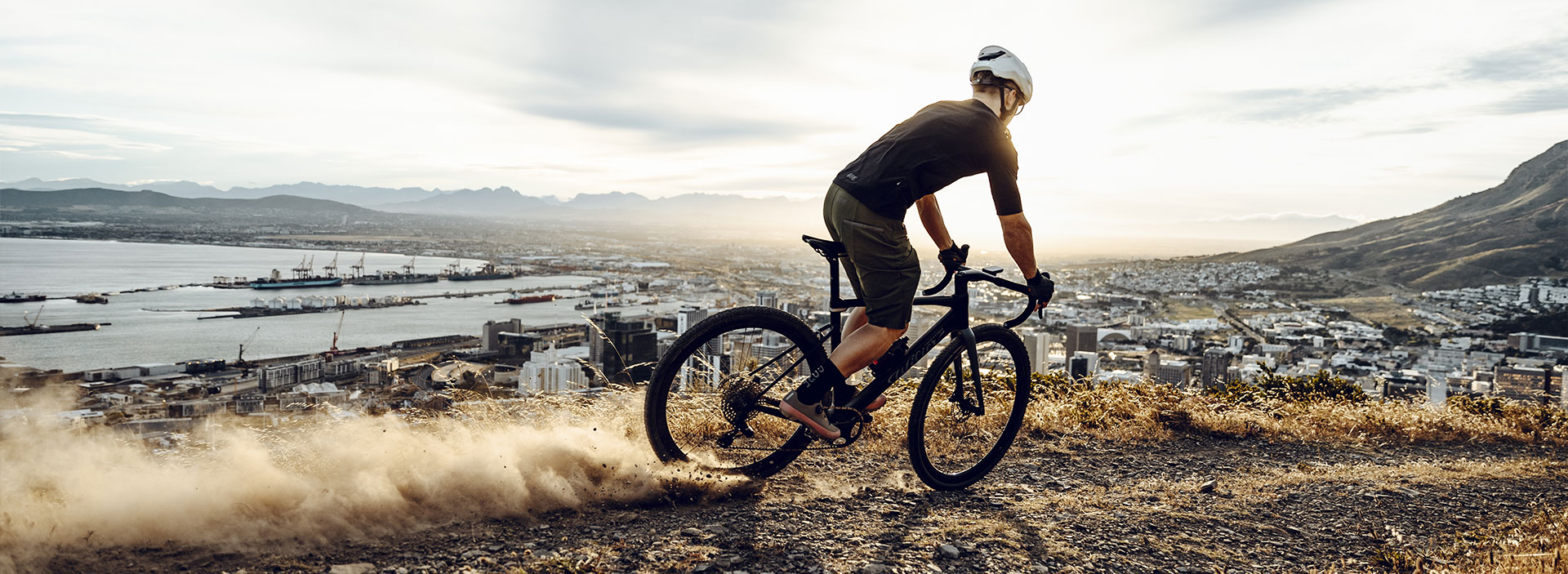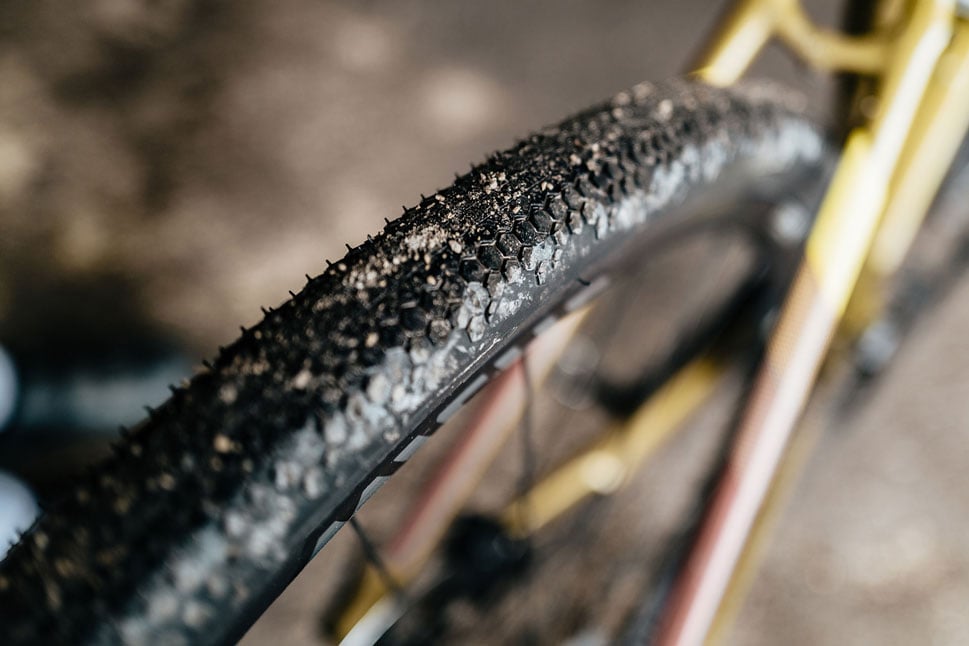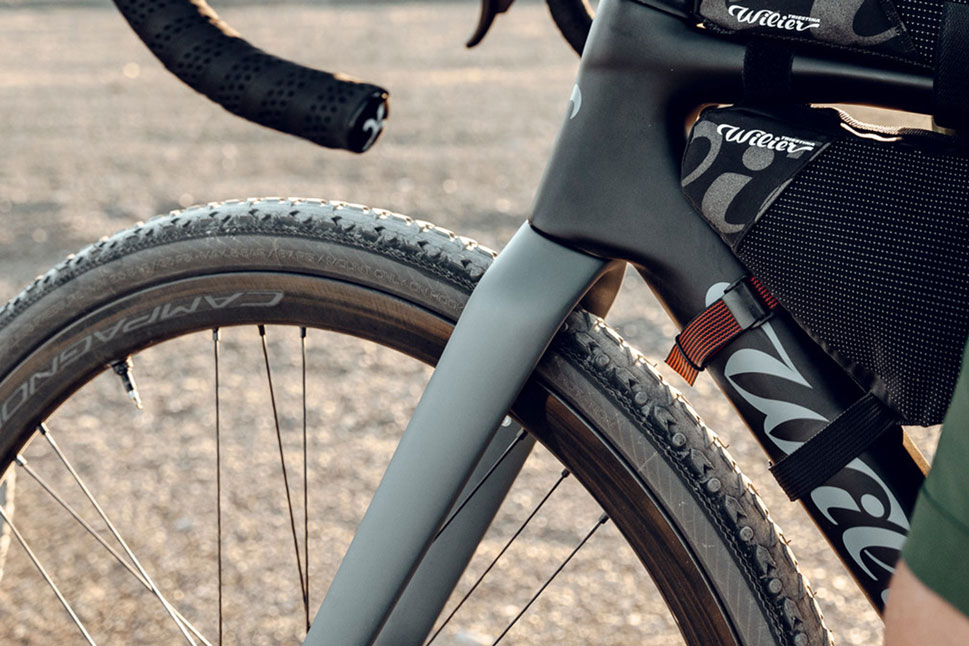- en
Tyres are the one connecting point between our bike and the road. Whether it be tarmac, paths, or dirt roads the choice of gravel tyres and the related wheel set-up is an important choice. However, certain choices become easier when we consider factors such as the weather, technical specifications that lead us to certain wheel / tyre matches and the feeling that we get back from the ride and road surface conditions. Compared to road bike tyre choices, gravel tyres may be the subject of a broader and more heated debate. To find the right solution it is necessary to define some key points.

Gravel wheels: standard 700C or road 650B plus?
Wheel size is a fundamental parameter that greatly affects our choice of tyres. The standard 28'' road-derived solution gives us a fast, stable bicycle on dirt tracks and fire roads. If we compare the 28" wheel to the 27.5'' 650B wheel, the road surface contact point is greater and this in turn gives us much improved traction. Furthermore, should things get a bit more rocky or technical the angle of engagement of an obstacle during the ride is smaller. However compared to the 27.5'' 650B wheel, the 28'' wheel has a slightly reduced space between the wheel and the frame: the tyre space is limited compared to a 650B wheel. In most cases it is possible to set up a 700C wheel with up to a 46mm width tyre.
As 650B wheels are smaller in diametre they reduce slightly the wheelbase of the bicycle. This in turn makes the bike more responsive and more manageable in technical sections. Compared to the 28 '' wheel, the air volume is greater therefore we are able to run much lower air pressures. This permits us to fit a softer and more elastic 60 / 62mm width gravel tyre. This type of tyre is suitable for particularly rough terrains. In this case we would be running something similar to a standard road plus tyre because, thanks to a higher tyre-wall the final diameter of the wheel would be similar to that of a 28''.
Very interesting, therefore, are gravel bikes that allow the installation of 700C and 650B wheels. Regardless of the standard, however, some trial and error will be necessary to identify the right configuration and ideal operating pressures, taking the indications provided by the manufacturers as a starting point.

Gravel tyres: Slick, semi slick, intermediate or knobby
Based on industry offerings for gravel tyres we can define that there are four categories of tyres.
- Slick: smooth and high-rolling tyres that to be used on pavement/asphalt and hard-packed dirt roads. They are the direct link with road cycling. The measurements vary from 700x28 up to 35/38 mm
- Semi slick: designed for riding on pavement, hard-packed dirt roads, and light gravel. With its low profile centre tread, the semi-slick rolls easily no matter the surface. Small side knobs provide cornering traction in loose over hard terrain.
- Intermediate: tyres that can also be used in cyclocross where the width limit of 33 mm applies. In gravel, a "mixed" tire can be set up to a 700x38 mm or 650x47 mm in the case of a 27.5 '' wheel. They are suitable for muddy terrain, singletrack and uneven dirt roads.
- Knobby: the largest tyres out of the four categories, to the point of reaching similar specifications for cross country mountain bike tyres. Large side knobs provide extra traction in deep, loose gravel and mud. Specifications that reach a standard 700x50 mm up to widths of 62 mm for a 650B wheel. Particularly suitable for challenging coarse-grained soils.




Conclusions
The perfect gravel tyre does not exist, simply because every cyclist has unique and different requirements and riding skills. Finding the right configuration certainly requires some investigation, and we are still talking about a process of research and tests in different environmental conditions and situations.
In general, if you normally ride on compact asphalt and dirt roads, it is a good idea not to go beyond a 35 mm width tyre. Should the road conditions deteriorate, it is a good idea to sacrifice the ride quality in terms of smoothness to increase the grip and improve traction of the tyre.
Related posts
Sign up to our newsletter
Fill in the form below for updates on all that's new in the Gravel world
If you no longer want to receive news from us, you can unsubscribe at any time.